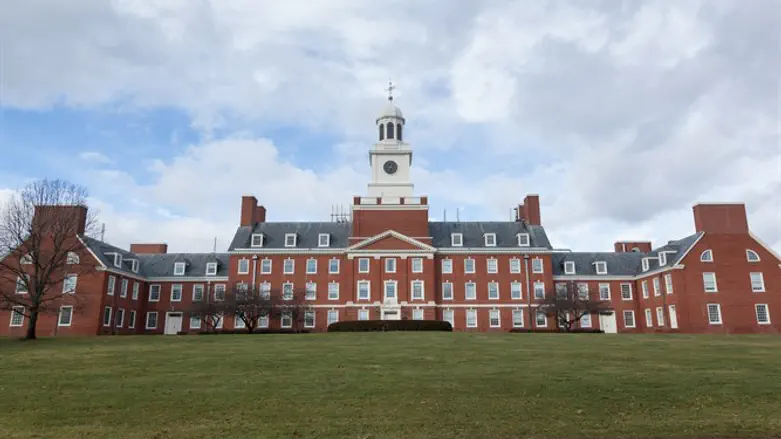
More than two thousand years before the ancestors of any New York Times (NYT) editor -- other than indigenous individuals -- lived in America, the Jewish people already existed with their own sophisticated language, culture and religion. This is still true today. Jewish peoplehood runs deep. The NYT understanding of this is, however, superficial to non-existent. Far worse, it denies self-determination to Jews to call themselves a people.
On this Jewish New Year’s Holiday (Rosh Hashanah), the NYT published a front page article entitled "Education Department Reopens Case Charging Discrimination against Jewish Students." This article attacked a decision by Kenneth Marcus, Assistant Secretary of Education for Civil Rights, to reopen an anti-Semitism case at Rutgers University.
The NYT claimed that the US Education Department embraced Judaism as an ethnicity and adopted what it called a “hotly contested definition of anti-Semitism” that included "denying the Jewish people the right to self-determination" by, for example, "claiming that the existence of a State of Israel is a racist endeavor" and "applying double standards by requiring of Israel a behavior not expected or demanded of any other democratic nation."
It is clear from this article that the NYT does not consider the existence of a Palestinian people contestable. Yet there was no such nationality even sixty years ago. The Arabs, in the British mandate of Palestine and after 1948 under Jordanian and Egyptian rule on the 'West Bank' and in Gaza respectively, saw themselves belonging either to tribes or to an international Arab nation or both.
Self-definition according to the NYT – a so-called “progressive” daily -- seems okay for the Palestinians, but not for Jews. Such double standards are a typical hallmark of anti-Semitism. What the NYT calls a “hotly contested definition of anti-Semitism” is the widely accepted International Holocaust Remembrance Alliance (IHRA) working definition of this hate mongering. Its approval required the agreement of the thirty one Western democratic nations represented on its board. It was also specifically adapted for internal use by a number of nations and many institutions in the Western world. Furthermore, this definition can be found on the website of the US State Department.
Ira Stoll, a former Forward editor, discovered that on two other occasions the NYT had described the same definition as “internationally accepted.”
The US media watch organization, CAMERA, has been exposing the NYT’s anti-Israeli bias for a long time. In 2014, I interviewed two senior analysts from CAMERA, Ricky Hollander and Gilead Ini for INN. They co-authored a major study on the unfair NYT coverage of the Palestinian-Israeli conflict.
Hollander and Ini said: “The New York Times is guilty of advocacy journalism. Both its editorial pages and news reporting lean heavily toward an anti-Israel perspective. This is in blunt contravention of its directive to journalists in the Ethical Journalism handbook, ‘to cover the news as impartially as possible’ and ‘tell our readers the complete, unvarnished truth as best we can learn it.’”
Reacting to the article on the Rutgers case, Hollander and Ini exposed several expressions used by the NYT journalist that are largely identical to those used by virulently anti-Israeli pro-Palestinian organizations.
It would be a mistake to view the opposition of the NYT and several other media including the Los Angeles Times to the reopening of the Rutgers case as a stand-alone issue. Marcus, a lawyer, has a long record and profound knowledge concerning antisemitic discrimination. He is the founder and former president of The Louis Brandeis Center for Human Rights and the Law in Washington. This organization litigated against classic anti-Semitism and anti-Israelism on US campuses. When Marcus was confirmed in his post by the Senate in June 2018, not a single Democrat voted for him.
When I interviewed Marcus for INN in 2013, he said: "There is an essential paradox at the heart of the current resurgence of campus anti-Semitism. Universities should be centers of reason and tolerance, yet in the United 
There is, for instance, a huge difference between radical environmentalism and environmental scholarship, between analysis of Islam and Arab propaganda and between gender studies and fanatical feminism. States they are the main source of anti-Semitism and anti-Israelism." Marcus was at the origins of a successful campaign to convince the Obama administration that the US Civil Rights Division of the Department of Justice should protect Jews, Sikhs, and members of other groups that have both religious and ancestral characteristics.
States they are the main source of anti-Semitism and anti-Israelism." Marcus was at the origins of a successful campaign to convince the Obama administration that the US Civil Rights Division of the Department of Justice should protect Jews, Sikhs, and members of other groups that have both religious and ancestral characteristics.
A variety of humanities departments of universities in the US illustrate how zealous liberalism enables academic degradation. Ideologists have in many places taken over subjects which are scholarly in nature. There is, for instance, a huge difference between radical environmentalism and environmental scholarship, between analysis of Islam and Arab propaganda and between gender studies and fanatical feminism. All this takes place against a frequently medieval culture of isolating universities from society at large through self-regulating by weak administrations. Tenure is yet another protective tool for quite a few carcicatures of scholarship.
For those producing hate speech on the fertile breeding grounds of academia, Marcus is a potential threat. The above-mentioned points need to be considered when wondering why his reopening of a case against anti-Semitism at Rutgers has received so much publicity in major US media.
